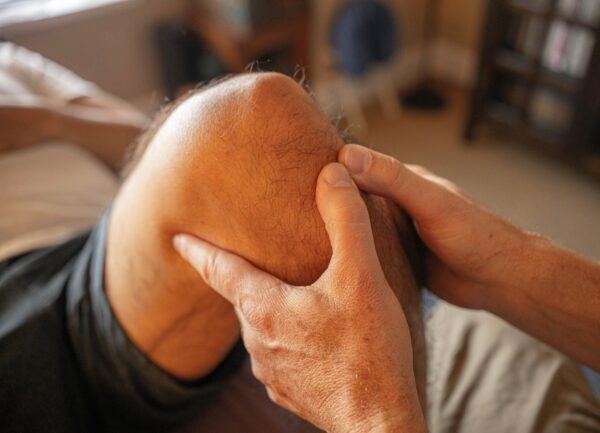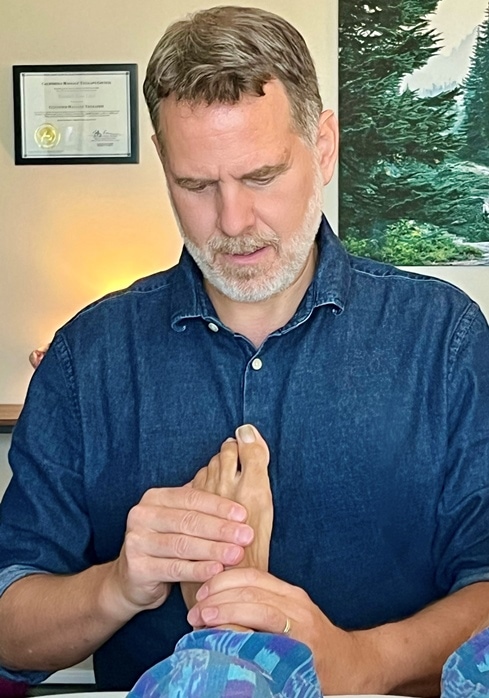What is Manual Therapy? About the Techniques…
Heard the term and wondered “what is manual therapy?” Manual therapy may be for you if you are stiff, sore, experiencing muscle or joint pain, or your range of motion is limited in your neck, back or limbs.
It may be a great option if you want to avoid invasive procedures or taking medications that come with a long list of potentially scary side effects.

The term “manual therapy” refers to a broad category of therapeutic techniques that involve hands-on manipulation of the body’s soft tissues, joints and muscles to relieve pain, improve range of motion and promote healing. It has been practiced for centuries and has evolved over time with the development of different techniques and approaches.
Randy Lind practices four notable forms of manual therapy, including the Hendrickson Method, Muscle Energy Technique (MET), NeuroKinetic Therapy (NKT), and Myofascial Release. This page provides a brief overview of each methodology. For a further explanation, see the detailed pages by following the hyperlinks on this page.

The Hendrickson Method
The Hendrickson Method was developed by Dr. Tom Hendrickson, D.C. in the 1970s. It combines various manual therapy techniques with principles you find in orthopedic medicine and osteopathy. The method focuses on treating not only the symptoms but also the underlying causes of pain and dysfunction.
The therapist uses a combination of specific manual techniques, including joint mobilization, soft tissue mobilization and Muscle Energy Technique (MET), to address musculoskeletal imbalances and promote healing.
Learn more about The Hendrickson Method >>
Muscle Energy Technique (MET)

Muscle Energy Technique (MET) is a type of manual therapy that uses the client’s own gentle muscle contractions to help improve range of motion, reduce pain and stiffness, and help to correct muscle imbalances due to injury or poor posture. This highly effective yet gentle technique is used as an intricate part of the Hendrickson Method. Learn more about Muscle Energy Technique >>
NeuroKinetic Therapy (NKT)
NeuroKinetic Therapy, developed by David Weinstock, is a system that addresses dysfunctional movement patterns and imbalances in the body.
It is based on the concept that the brain controls movement patterns and that muscle compensation patterns can develop due to various factors such as injury, trauma, or poor posture.
NKT uses manual muscle testing (similar to Applied Kinesiology) to identify imbalances and dysfunctional movement patterns. Once the “errant” patterns and imbalances are identify, the therapist then applies hands-on techniques, such as soft tissue releases and muscle activations, to reprogram the brain’s movement patterns and restore proper muscle function.
Learn more about NeuroKinetic Therapy (NKT) >>
Myofascial Release

Myofascial release is a manual therapy technique that focuses on releasing tension and restrictions in the body’s fascia, a connective tissue that surrounds, connects and supports all muscles, bones and organs.
The concept of myofascial release was first developed by an osteopath, Robert Ward and a physical therapist, John F. Barnes in the 1960s. The name Myofacial Release was later coined as a technique in 1981.
The therapist applies gentle sustained pressure or stretching to the affected areas to release fascial restrictions and promote improved tissue mobility and function. Myofascial release can be performed using hands-on techniques, tools, or specialized equipment.
Learn more about Myofascial Release >>
Benefits of Manual Therapy
These four forms of manual therapy share the common goal of addressing musculoskeletal imbalances, promoting healing and improving overall movement and function. They can be used to treat a wide range of conditions, including musculoskeletal pain, injuries, postural imbalances and movement dysfunctions. It’s important to note that manual therapy techniques should be performed by qualified, trained professionals to ensure safety and effectiveness.
